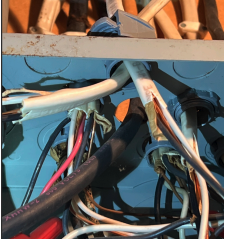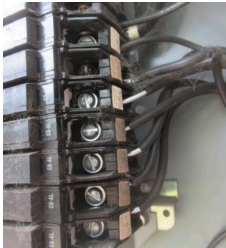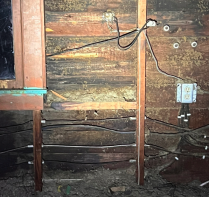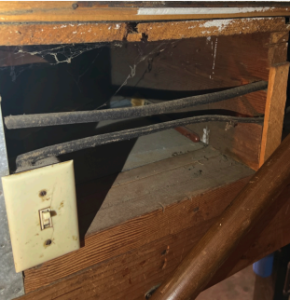Understanding Branch Wiring in Your Home’s Electrical System
As home inspectors, we dive into your electrical system during inspections, and branch wiring—the wires carrying power from your main panel to outlets, lights, and appliances—is a big part of that. Different homes have different wiring types, each with its own history, quirks, and safety considerations. Here’s what you need to know about the most common types, packed with facts and risks to watch for.
1. Copper Wiring
Facts:
Copper has been the go-to for branch wiring since the 1960s, prized for its excellent conductivity (second only to silver!) and durability. It’s typically encased in Romex (non-metallic sheathed cable) with color-coded insulation—white for neutral, black or red for hot. Standard sizes like 14-gauge (15-amp circuits) or 12-gauge (20-amp circuits) power most homes. Copper resists corrosion better than other metals, too.
Risks:
Even copper isn’t foolproof—faulty splices, pinched wires, or overloaded circuits (think too many space heaters!) can overheat. Insulation can crack after 30-40 years, especially in hot attics, risking shorts or shocks.
Good to Know:
Copper wiring in good condition is a homebuyer’s dream—safe, efficient, and built to last 50+ years with care.

2. Aluminum Wiring
Facts:
Used widely from 1965 to 1973 due to copper shortages, aluminum branch wiring is lighter (about half copper’s weight) but only 61% as conductive, so it needs larger gauges (e.g., 10-gauge aluminum for a 20-amp circuit vs. 12-gauge copper). It’s often silver-colored and stamped “AL” on the insulation. About 1.5 million U.S. homes still have it.
Risks:
Aluminum expands and contracts more with heat, loosening connections and raising fire risks—studies link it to a higher fire hazard than copper. Oxidation at terminals can worsen this. Signs like flickering lights or buzzing outlets mean it’s time for an electrician. Special CO/ALR outlets or pigtailing with copper can help.
Good to Know:
It’s not an automatic replacement job, but it demands vigilance and often drives up insurance premiums.

3. Knob-and-Tube Wiring
Facts:
Dating back to the 1880s through the 1940s, knob-and-tube (K&T) was the first standardized wiring system. It uses ceramic knobs to hold wires and tubes to protect them through wood framing. Wires are single conductors (no bundled cables), often 14-gauge copper, and it was designed for 60-amp service—tiny by today’s 200-amp standards! About 1% of U.S. homes still have active K&T.
Risks:
No grounding means higher shock risk—plugging in a three-prong appliance is a no-go without adapters. It maxes out at 15 amps per circuit, so modern loads (like microwaves) can overheat it. Rubber insulation hardens and cracks after 50-70 years, exposing wires. Replacement is usually the safest bet.
Good to Know:
K&T is a relic—fascinating but obsolete. Insurers often balk at it, and rewiring can cost $5,000-$15,000 depending on home size.

4. Cloth-Insulated Wiring
Facts:
Common from the 1920s to 1950s, this copper wiring uses cotton or rayon cloth soaked in wax or rubber for insulation, often paired with K&T or early BX (armored cable). It’s usually 14- or 12-gauge and lacks modern plastic’s durability. You’ll spot its black, woven look in old panels or exposed areas. Some versions included asbestos for fire resistance—another layer of history!
Risks:
Cloth frays or brittles over 60-80 years, especially in damp basements or hot attics, risking exposed wires and fires. Rodents chew it like candy, and asbestos (if present) poses a health hazard if disturbed. We flag this for replacement if it’s widespread or damaged.
Good to Know:
It worked in its day, but today’s power needs and safety codes make it a liability—rewiring is often the smartest move.

Why It Matters During a Home Inspection
When we inspect, we’re tracing these wires to spot outdated systems, worn insulation, or overloaded circuits. Each type tells a story about your home’s age and safety. Whether it’s copper’s reliability or K&T’s vintage charm, we’ll give you the facts to help you decide what’s next—repairs, upgrades, or just peace of mind.
Questions about your wiring?
We’d love to help shed light on your home’s electrical system! 🚧💡




Leave a Reply
Want to join the discussion?Feel free to contribute!